Resultant And Equilibrant Forces Lab Report
This lab proves that the equilibrant counteracts the forces of three other vectors by testing data found by both graphing and calculating x- and y- coordinates. The resultant is essentially the sum force of all the vectors that we combine and its equal and opposite force is called the equilibrant.
040416 Magculang Kiere Christine Marciales Cheska Mariano Ericka Paula Masuhay Chelsea Audrey Resultant and Equilibrant Forces EXPERIMENT 4 ABSTRACT The experiment was done to determine the resultant and equilibrant force of three different forces.
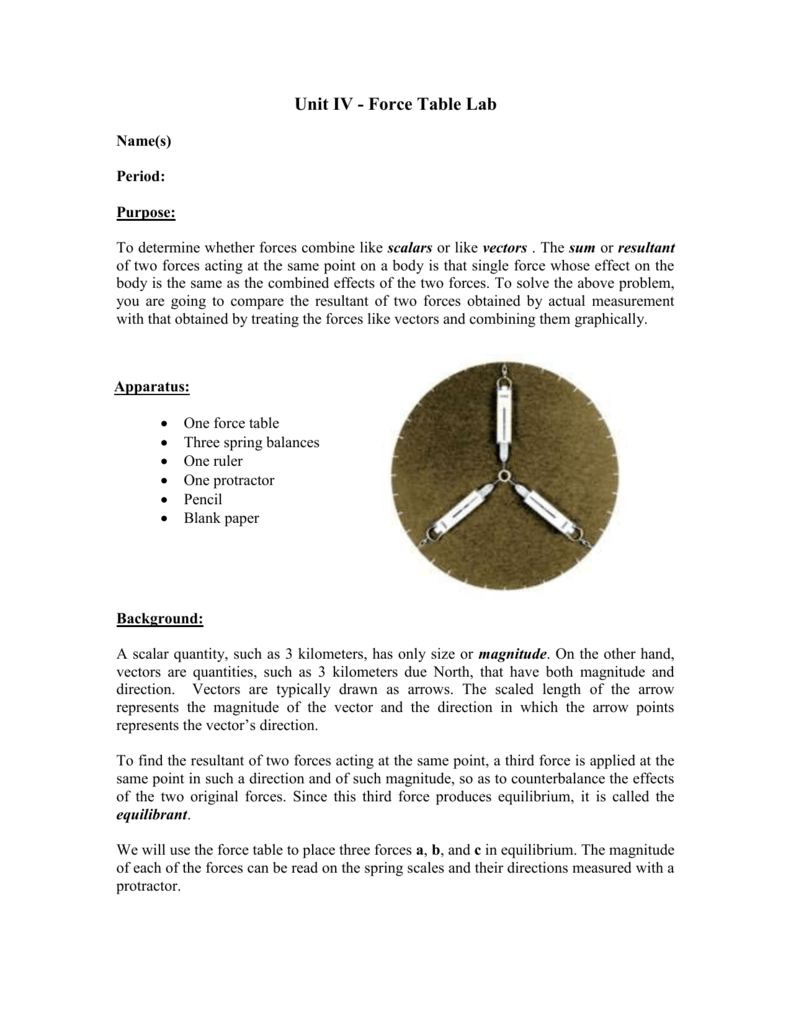
Resultant and equilibrant forces lab report. The Equilibrant Force balances the Net Force causing static equilibrium. Equilibrant is a force that is exactly opposite to a resultant. View Lab Report - Lab Report 4docx from PHY 301 at Queensborough Community College CUNY.
What is the definition of equilibrium. The equilibrant is the same magnitude of the resultant force but the equilibrant has the opposite direction of the resultant. Repeat the experimental procedure for the three frocesA BandCand recordthe magnitude and direction of the measured equilibrant and resultant.
Force F 3 that brings the ring to equilibrium is called the equilibrant. Pre-Lab for LAB3 Problem 1 3-Put An example in Vector Addition or poor golf skills. Net Force - the resultant vector that is the sum of all forces being applied to an object.
It is equal and opposite to the resultant of the set of forces. Concurrent forces are forces that pass through the same point. 031416 Magboo Yna Denise Date Submitted.
Equilibrant and resultant have equal magnitudes but opposite directions. The students used a force table and three forces namely F1 F2 and F3 in determining these two forces. Physics Formal Report - Resultant and Equilibrant Forces In.
Note that if you add 180 o to or subtract 180 o from the angle of F 3 it gives you the angle of R. Equilibrium of Forces Acting at a Point Pre-lab Questions 1. Resultant 234 degrees Equilibrant 234 180 54 degrees In another mini lab we wanted to calculate the equilibrant vector the vector of force that is oppositely equal to the resultant of the forces but we also wanted to see how it would change as the angle changes.
Equilibrant Force - one that is equal in magnitude and opposite in direction to the Net Force. Draw a set of three vectors whose sum is zero. Having found F3 is like you have found R.
The experiment was done to determine the resultant and equilibrant forces of different combinations of forces. The vector sum of the resultant vector and equilibrant vector. The vector sum of two or more forces is the resultant.
Be sure to record the scale you used on the drawing. The equilibrant vector is equal in magnitude but oppositely directed from the resultant vector. Lab 1 - Force Table Introduction All measurable.
Can an object be moving and still be in equilibrium. For example a mathematical solution has less. Science Submitted By emilyHburton Words 451 Pages 2.
Each method has advantages and disadvantages in this lab. Resultant is a single force that can replace the effect of a number of forces. In your data record the magnitude and the direction of the resultant force.
Record the angle and magnitude of F 3. Resultant and Equilibrant Forces ABSTRACT Using a force table we mounted a ring to serve as the object forces act on. How will you estimate the uncertainty of each force acting on the ring.
The measured resultant of the two forces is equal in magnitude and oppositein direction to the measured equilibrant. The equilibrant is the same magnitude of the resultant force but the equilibrant has the opposite direction of the resultant. The purpose of this experiment is to find the resultant and equilibrant of several systems of.
Physics lab report 3 introductory physics laboratory faculty of science uoit lab report translational equilibrium vector addition anoosh hajira crn 40387. The setup consisted of a force table with three pulleys attached at certain angles that gave pathways to three strings that are attached to a ring at the center and three weight. Then we needed to determine a formula to determine the resultant.
For this lab what criteria will you use to decide when the forces acting on the ring are in equilibrium. In this experiment a ring was placed on the center of a force table with three strings attached to it. The resultant can in effect replace the individual vectors.
The equilibrant of a set of forces is the force needed to keep the system in equilibrium. This lab proves that the equilibrant counteracts the forces of three other vectors by testing data found by both graphing and calculating x- and y- coordinates. By computing for the negative vector of any one of the three forces given the two other the experimental resultant forces were.
This is the force which cancels out the resultant or balances it. We attached three strings around the ring and to each end of the strings designated a pulley with corresponding weight holders situated in. Lim Precious Mary 2G Pharmacy Physics Lab Lomboy Lawrence Alfred Date Performed.
Objective The objective of this experiment is to find the equilibrant of. Each method has advantages and disadvantages in this lab. B The goal is to find R the resultant of F 1 and F 2.
At the end of each string were weight holders designated in specific magnitudes and directions as to which obtained equilibrium with the ring stable in the center. Record the directions and the magnitudes of the resultant vector and the equilibrant vector.
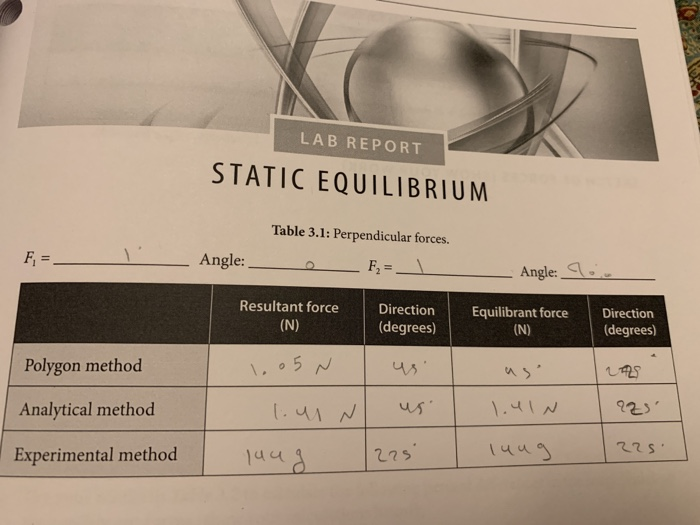
Lab Report Static Equilibrium Table 3 1 Chegg Com
Laboratory 3 Force Table And Vector Addition Of Chegg Com

Force Table Vector Addition Tn Inquiry Dec09 Troy Psim
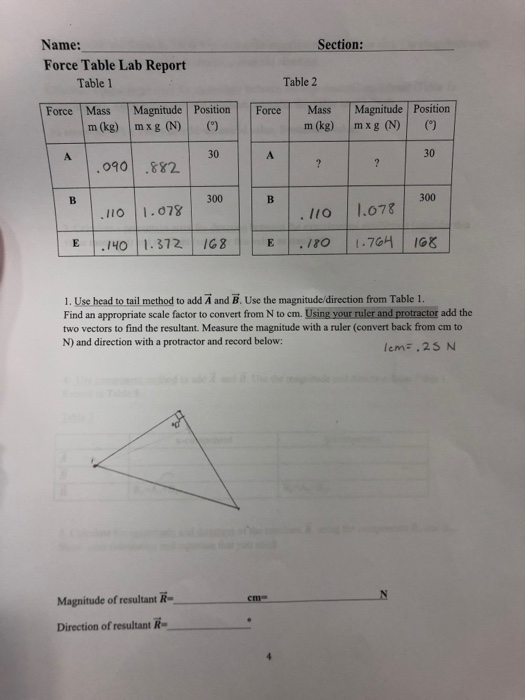
Please Complete Full Lab Amp All Questions Or Lab Chegg Com

Force Table Lab Jacky Zhang S Physics Got You Moved

Edited Phy 2020 Lab 02 Force Table Docx Physics 2020 Lab 02 Determination Of Resultant Forces Introduction If Several Forces Each Having Different Course Hero
Cape Unit1 Physics Lab 5 Parallelogram Law Pdf Force Euclidean Vector

Lab 2 Force Table Introduction This Lab Chegg Com
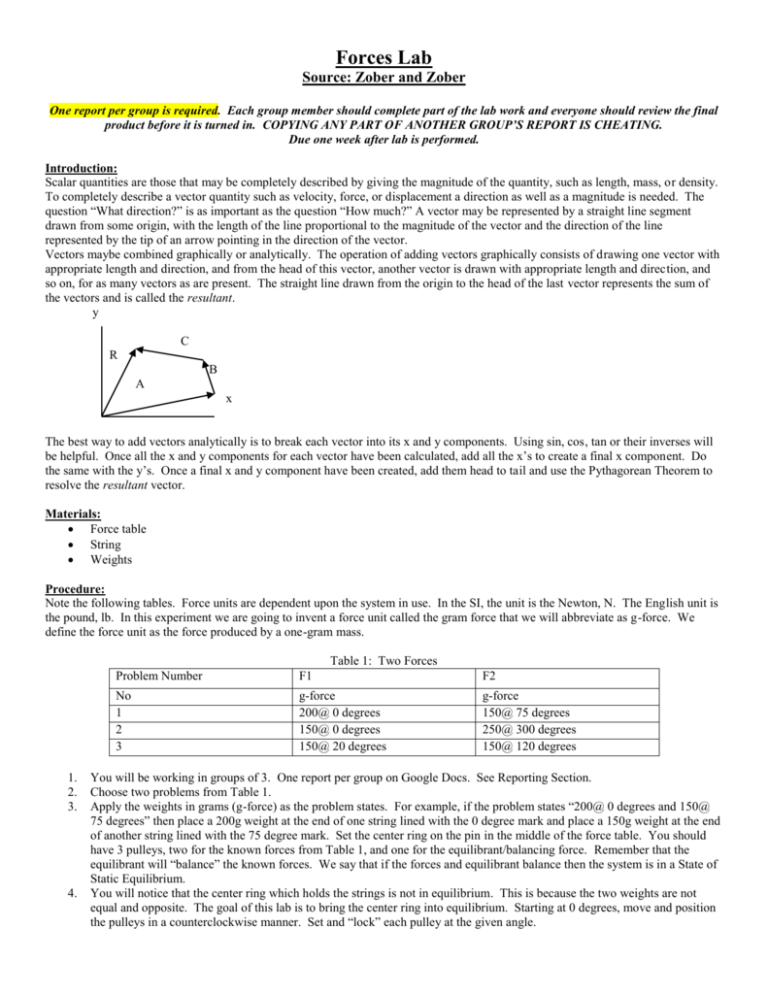
Composition And Resolution Of Vectors Lab
Resultant And Equilibrant Force Pdf Trigonometric Functions Euclidean Vector
Cape Unit1 Physics Lab 5 Parallelogram Law Pdf Force Euclidean Vector

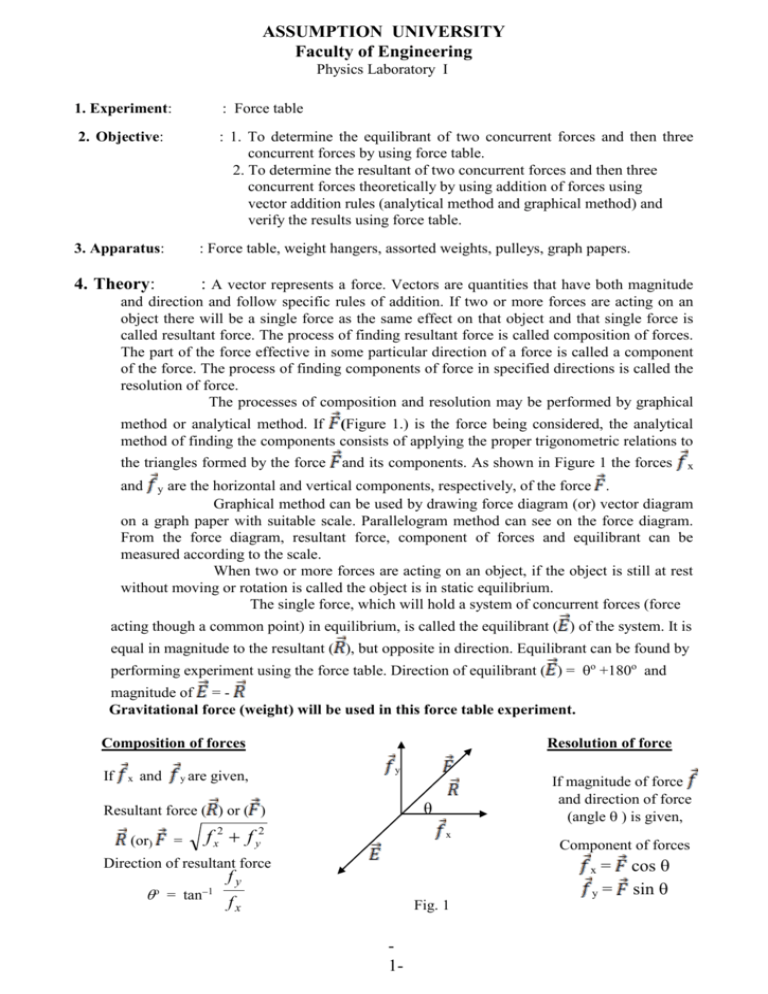
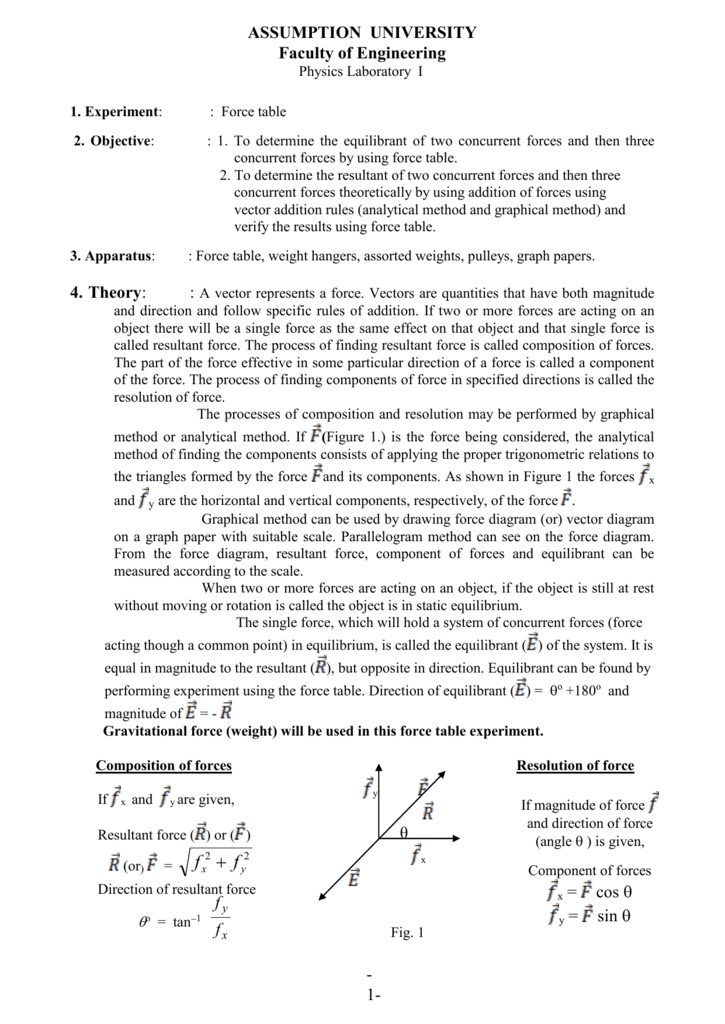


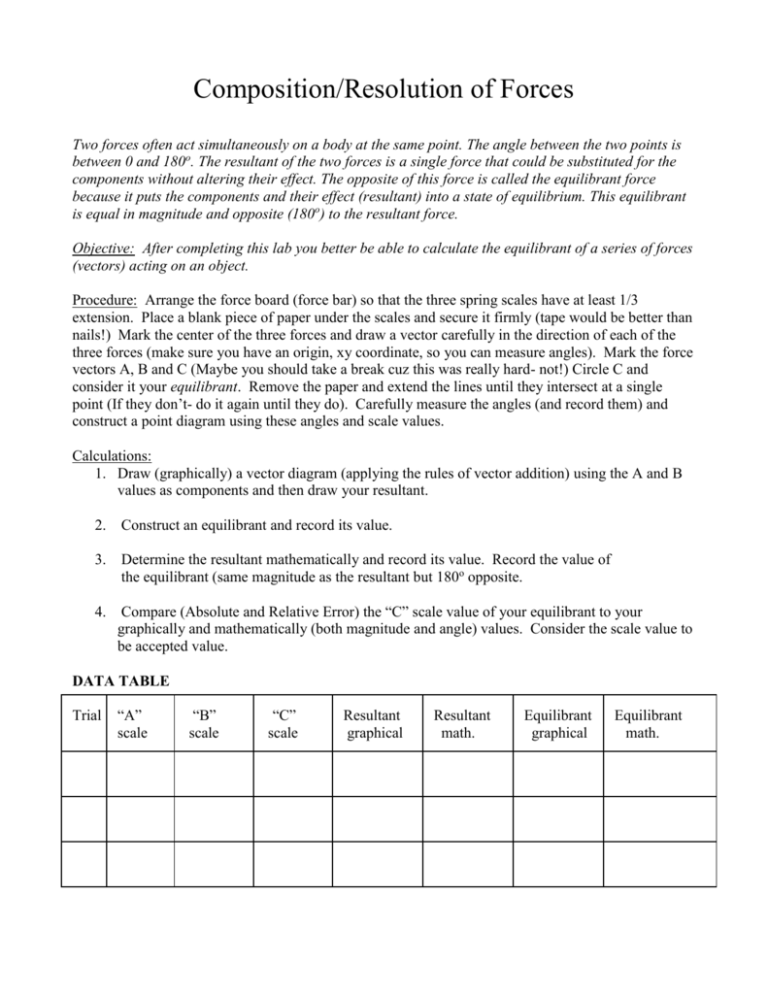
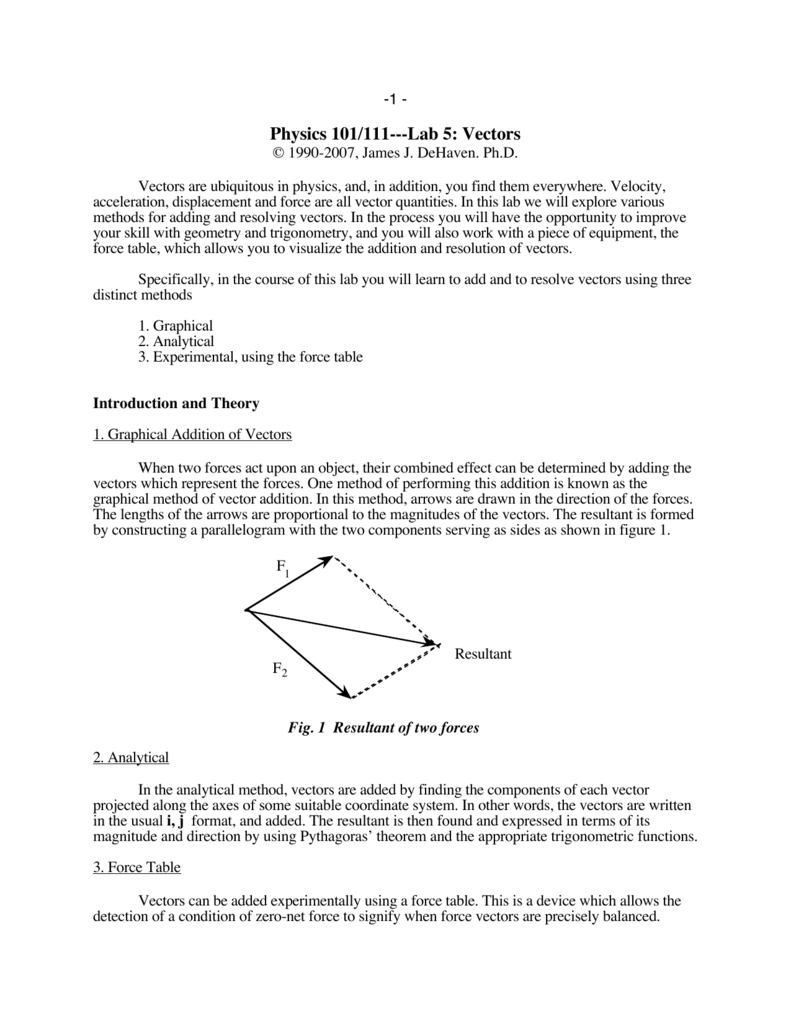


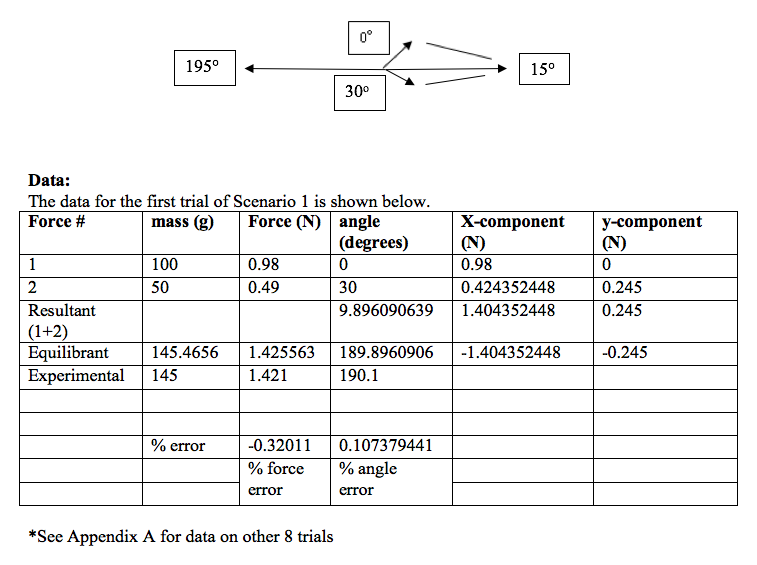
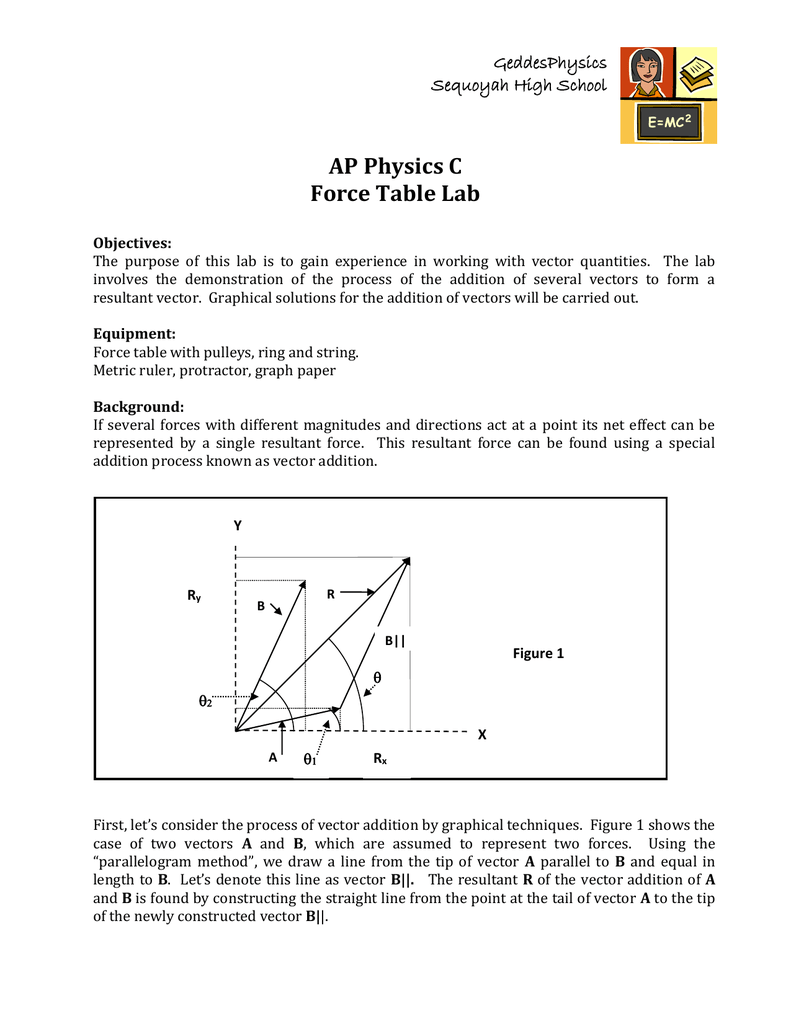
Posting Komentar untuk "Resultant And Equilibrant Forces Lab Report"